Tan Dun: Paper Concerto
Introduction
The second of Tan Dun's 'double concerto' set consists of the Paper Concerto. As the sleeve notes say, it is 'normally a utilitarian material'....this is about as far as can go in agreeing with the blurb, and which is freely available to read on the disc description page, should you wish to do so.
As with the 'Water Concerto' (reviewed earlier), Tan Dun attempts to create a work blending 'contemporary' Western orchestral music, with various sounds that may be made by paper.....which really boils down to hitting, tearing, crumpling, inflating and bursting....you get the picture. An interesting concept perhaps, but fails on almost every level.
Audio
Perfectly acceptable sound levels overall, although many of the more percussive effects on the harder paper-based substances tend to cover any subtleties in the orchestration. The bass flute is well to the fore, so I was left wondering whether the DVD sound bears any relation to how things came across in the auditorium. There is mention of a microphone for the cardboard tube, but little evidence that the flute, or indeed pianissimo paper tearing could be heard at the back (not necessarily our problem as DVD viewers of course).
Video
Very nice indeed, with quite dramatic close-ups for the necessarily choreographed movements amongst the paper percussion soloists, whch are needed to make the sound of tearing bits of paper, whether slowly or otherwise, a little more interesting. The lighting effects are also well caught, increasing the theatricality of the whole work, such as it is.
Extras
There are three short films accompanying the main performance.
Paper: The song of nature
Here, Tan Dun gives some insight into why he chose paper for this project. Apparently, the shamans of his childhood village used it in ceremonies for births and deaths. Unfortunately, very little else is learned in the film's 15 minutes or so, apart from some tantalising shots of ancient paper-making techniques using bamboo pulp.
Tan Dun demonstrates paper music
Constitutes 6 minutes of the composer playing the various types of instruments used in the work, with no explanations. Overall, the results are quite uninteresting, despite the almost childlike pleasure on his face when he makes the sounds.
Tan Dun teaches paper instruments
A 25 minute demonstration of how to play the various paper-based instruments, in which I rapidly got the feeling that he was making it all up as he went along. Certainly not as interesting as the demonstration given on the Water Concerto DVD, it only reinforces the feeling that you can only do so much with paper before things become to sound a little tedious.
Conclusion
Once again, Tan Dun attempts to 'mix' Eastern and Western cultures in a large orchestral work, but I'm afraid this work is almost a complete failure.
Paper may well be an organic substance (when made as we see in the film), but this doesn't really make it a viable medium for the solo instruments in a large orchestral work, and you really have to suspend some disbelief when the barrel is scraped so as to bring out the paper umbrellas....which are played by opening, and then closing them, sometimes in a lively-ish syncopated rhythm, but this just makes it all the more silly.
Admittedly, much of the performance is visual, with huge paper sheets hanging down from the ceiling, the silhouetted figures of the soloists standing behind them, and the aforementioned umbrellas, which look fairly pleasant when being twirled. A lot of the movements have been choreographed quite gracefully, giving more of an impact than the actual sounds do, but can also appear trite, such as the psuedo-cheerleader movements when playing a contraption resembling paper pom-poms.
The four movements of the concerto are given traditionally Western (Italian) tempo markings and the orchestra is used in a fairly traditional manner as well, although the first movement inludes a bass flute for much of it (brilliantly played by Georgia Mohammar) and I began to get the impression that all this paper being hit, torn, hummed into and crumpled, was just getting in the way of the actual music, which is often quite beautiful.
The soloists and orchestra give it their all, but if the battle isn't already lost before the music begins, then the fourth movement cadenza for a pile of cardboard boxes finishes it off completely.
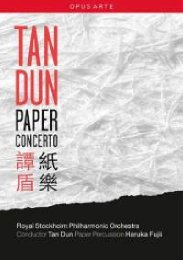
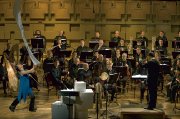
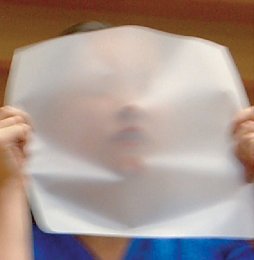
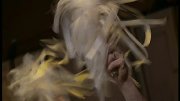
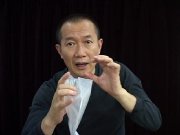
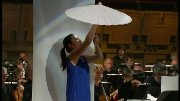
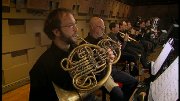
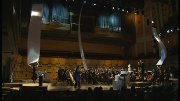

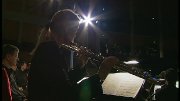


































Your Opinions and Comments
Be the first to post a comment!